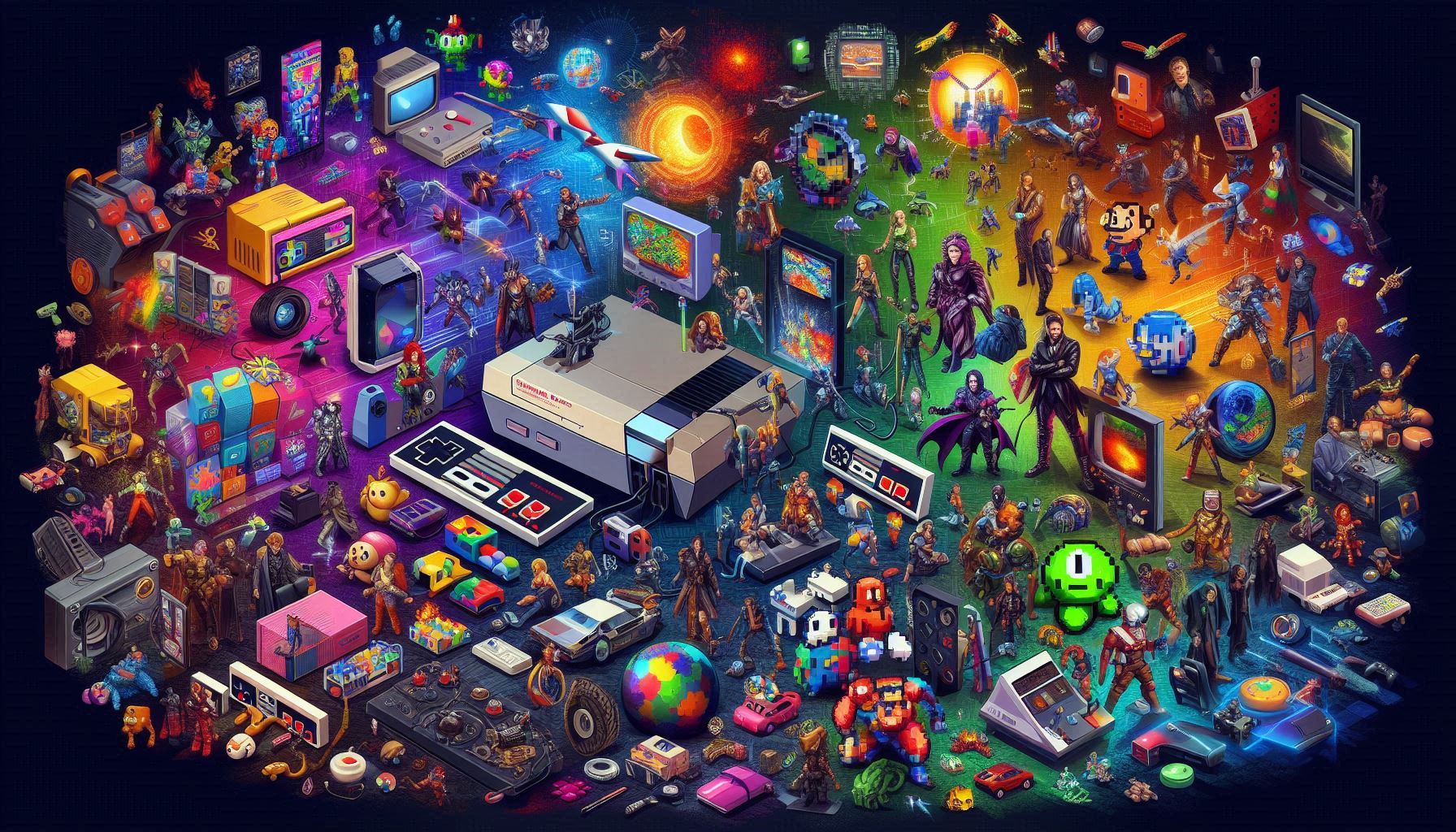
The Early Years of Nintendo (1889-1970)
Founding and Early Products of Nintendo
Fusajiro Yamauchi founded Nintendo on September 23, 1889, in Kyoto, Japan. Initially, the company produced handmade playing cards for a game called Hanafuda. These cards quickly gained popularity, and by the early 1900s, Nintendo established itself as a leading card manufacturer in Japan.
Diversification of Nintendo’s Business Ventures
In the 1960s, Nintendo began diversifying its business. The company experimented with various ventures, including a taxi service and a love hotel. However, it found significant success in the toy industry, particularly with the launch of the “Ultra Hand,” a popular toy that allowed users to grab objects from a distance.
The Video Game Revolution and Nintendo’s Rise (1970-1989)
Entering the Video Game Market: Nintendo’s First Arcade Games
In the early 1970s, Nintendo entered the video game market. The company created arcade games, starting with “EVR Race” in 1975. However, the release of “Donkey Kong” in 1981 marked a significant turning point. This game introduced Mario, who would become Nintendo’s iconic mascot.
Home Consoles: The Launch of the Famicom and NES
In 1983, Nintendo launched the Famicom (Family Computer) in Japan, which became a massive success. Later, the Famicom debuted in North America as the Nintendo Entertainment System (NES) in 1985. The NES revitalized the video game industry after the crash of 1983 and introduced classic games like “Super Mario Bros.” and “The Legend of Zelda.”
The 16-Bit Era and Beyond: Nintendo’s Innovations (1990-1999)
Super Nintendo Entertainment System (SNES): A New Standard in Gaming
In 1990, Nintendo released the Super Famicom in Japan and the Super Nintendo Entertainment System (SNES) in North America in 1991. The SNES featured improved graphics and sound, along with iconic titles like “Super Mario World” and “The Legend of Zelda: A Link to the Past.”
Game Boy and Portable Gaming Revolution
In 1989, Nintendo launched the Game Boy, a handheld gaming device that became a cultural phenomenon. It popularized portable gaming and introduced titles like “Tetris” and “Pokémon Red and Green.”
The 3D Revolution and New Challenges for Nintendo (2000-2010)
Nintendo 64: Pioneering 3D Graphics in Gaming
In 1996, Nintendo released the Nintendo 64, notable for its 3D graphics and innovative controller design. Iconic games such as “Super Mario 64” and “The Legend of Zelda: Ocarina of Time” set new standards for 3D gaming.
GameCube and Competition: Navigating a Challenging Market
Nintendo released the GameCube in 2001, but it faced stiff competition from Sony’s PlayStation 2 and Microsoft’s Xbox. Despite its innovative design and strong first-party titles, the GameCube struggled to achieve the same level of success as its predecessors.
The Wii and Resurgence of Nintendo (2006-2012)
Wii Console: Revolutionizing Gaming with Motion Controls
In 2006, Nintendo launched the Wii, which revolutionized gaming with its motion-sensing controls. The Wii appealed to a broad audience, including casual gamers and families. Consequently, it became one of the best-selling consoles of all time, featuring popular titles like “Wii Sports” and “Mario Kart Wii.”
Nintendo DS and 3DS: Innovations in Handheld Gaming
The Nintendo DS, released in 2004, marked another major success, introducing dual screens and touch controls. In 2011, Nintendo launched the 3DS, which featured glasses-free 3D technology and a strong library of games.
Modern Era of Nintendo (2012-Present)
Wii U and Challenges: Lessons Learned from Market Struggles
Nintendo released the Wii U in 2012, but it struggled to gain traction in the market. Despite its innovative features, it faced challenges due to a lack of third-party support and confusion over its branding.
Nintendo Switch: A Hybrid Console Success Story
In 2017, Nintendo launched the Nintendo Switch, a hybrid console that functions as both a home console and a portable device. The Switch has achieved massive success, with popular titles like “The Legend of Zelda: Breath of the Wild” and “Animal Crossing: New Horizons.”
Continued Innovation in Gaming: Nintendo’s Future
Today, Nintendo continues to innovate in the gaming industry, focusing on unique gameplay experiences and beloved franchises. Additionally, the company has embraced mobile gaming with titles like “Super Mario Run” and “Pokémon GO.”
Conclusion
From its origins as a playing card company to its status as a global leader in the video game industry, Nintendo’s history showcases innovation, creativity, and a commitment to delivering memorable gaming experiences. The company has shaped the gaming landscape and continues to influence the industry today.
